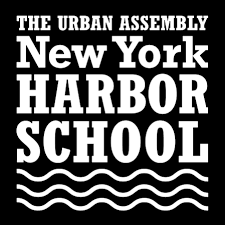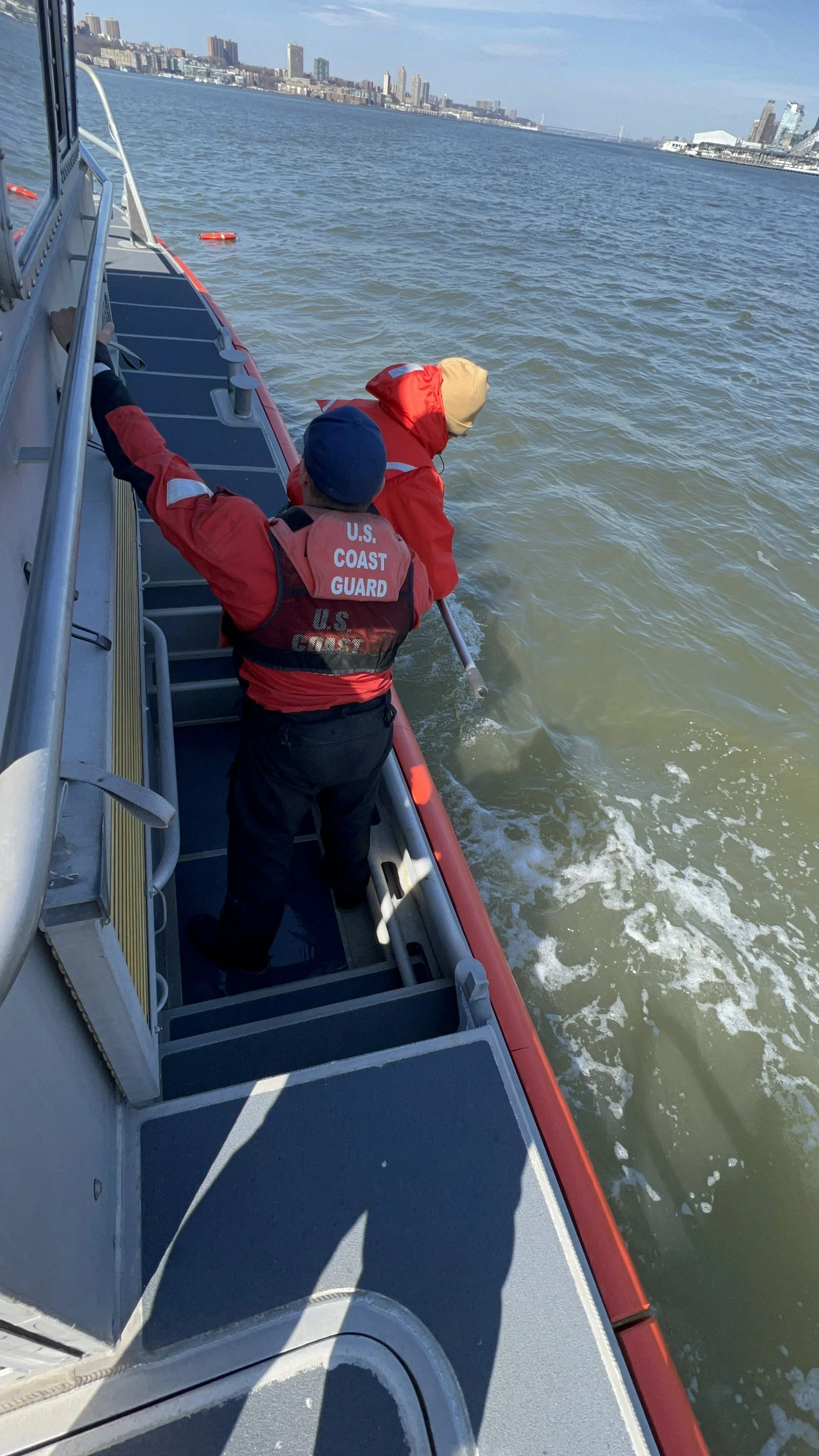Peaking into the Life of a USCG Crew
Today the Coast Guard came by to show us what daily life is like on a 45ft fast response boat. They arrived at a little past 3 and invited us onto the boat. It had a large platform on the back, with walkways headed towards the bow of the boat and a gun stand at the peak of the bow. After we all boarded, we began to head up the Hudson. We began asking questions about how the boat worked, how the ranking system in the Coast Guard worked, and what each of the crew’s roles were on the boat. There was TJ, the navigation officer, Dylon, the marine technician, and Chris, the Coxswain. Our group was mainly interested in Engineering, and so Dylon was kind enough to show us the engine while we were underway. He described to us how each of the parts worked, and what they did to contribute to our propulsion system. This was very inspirational and informative to me since I am planning to study engineering in the future. Dylon and I had a 1 on 1 conversation about engineering in the Coast Guard, and I learned about some options I can study under. Dylon described to me how there are not only Marine engineers, but Marine technicians as well. What I learned was that Marine engineer work partly on building and designing boats, while Marine technicians focus on boat repair. Boat repair includes plumbing, electric engineering, etc. After our brief Q&A about the Coast Guard, we then explored the cockpit of the boat. The cockpit had four seats, two of which were piloting seats. We then got the opportunity to drive the boat, half of us would be in the cockpit driving while the other half would practice man overboard drills. Driving the boat was amazing, the steering was controlled by a joystick, and the same with the throttle. The boat reacted almost instantly to the movements of the steering stick, which made executing precise maneuvers extremely easy. Compared to our boats Indy-7 and Privateer, it was a major improvement. We would have at least 10 minutes each to get used to the handling and practice piloting the boat. Then we would begin a MOB drill, which Chris would take over for, so we could see how he handled approaching the mannequin. Once the mannequin was right upside the boat, the other group would pull it aboard and run through CPR training. This was an amazing experience and was also extremely informative. Not only did we learn more about the industry, but we got to enhance our skills in piloting, rescue and recovery, and most importantly making connections. This would be beneficial for future Vessel Ops students in enhancing their skills as well.
-Aiden Moyer

